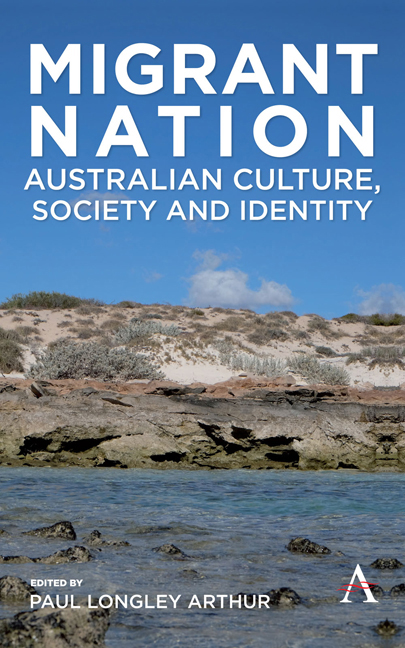Book contents
- Frontmatter
- Contents
- List of Figures
- 1 Introduction: Transcultural Studies in Australian Identity
- 2 Remembering Aboriginal Sydney
- 3 Files and Aboriginal Lives: Biographies from an Archive
- 4 Writing, Femininity and Colonialism: Judith Wright, Hélène Cixous and Marie Cardinal
- 5 The Staging of Social Policy: The Photographing of Post-War British Child Migrants
- 6 Writing Home from China: Charles Allen's Transnational Childhood
- 7 Australian? Autobiography? Citizenship, Postnational Self-Identity and the Politics of Belonging
- 8 A Nikkei Australian Story: Legacy of the Pacific War
- 9 Displaced Persons (1947–52) in Australia: Memory in Autobiography
- 10 Between Utopia and Autobiography: Migrant Narratives in Australia
- 11 Vietnamese–Australian Life Writing and Integration: The Magazine for Multicultural and Vietnamese Issues
- 12 Heroes, Legends and Divas: Framing Famous Lives in Australia
- List of Contributors
- Index
12 - Heroes, Legends and Divas: Framing Famous Lives in Australia
Published online by Cambridge University Press: 10 May 2018
- Frontmatter
- Contents
- List of Figures
- 1 Introduction: Transcultural Studies in Australian Identity
- 2 Remembering Aboriginal Sydney
- 3 Files and Aboriginal Lives: Biographies from an Archive
- 4 Writing, Femininity and Colonialism: Judith Wright, Hélène Cixous and Marie Cardinal
- 5 The Staging of Social Policy: The Photographing of Post-War British Child Migrants
- 6 Writing Home from China: Charles Allen's Transnational Childhood
- 7 Australian? Autobiography? Citizenship, Postnational Self-Identity and the Politics of Belonging
- 8 A Nikkei Australian Story: Legacy of the Pacific War
- 9 Displaced Persons (1947–52) in Australia: Memory in Autobiography
- 10 Between Utopia and Autobiography: Migrant Narratives in Australia
- 11 Vietnamese–Australian Life Writing and Integration: The Magazine for Multicultural and Vietnamese Issues
- 12 Heroes, Legends and Divas: Framing Famous Lives in Australia
- List of Contributors
- Index
Summary
Stories of shady characters are among the most popular biographies on the Australian Dictionary of Biography (ADB) website. Between 1 July and 3 November 2011, the biographies of brothel-keeper Tilly Devine and fellow underworld figure Kate Leigh were the most frequently viewed on ADB Online, with a total of 85,983 page views between them. Gangster Squizzy Taylor was the second most popular in the 1 April to 30 September 2013 period, reaching 47,444 page views. It may be that these statistics reflect a temporary high point of visibility for these early-twentieth-century criminals, attributable to the popular television series Underbelly, but the appeal of the notorious character is also evident in the ongoing popularity of bushranger Ned Kelly, the third most popular figure between July and November 2011, with 25,063 page views, and the most popular between April and September 2013, hitting 52,752 page views. A more diverse cast of characters rounded out the top ten in both periods, but all are familiar names often found in selections of Australian heroes, such as Edmund Barton, Caroline Chisholm, Peter Lalor and Mary MacKillop. The ADB is just one of many texts – written, visual, aural, digital or physical – collecting and telling the lives of influential, significant, famous or heroic figures from Australia's past. Although it is a reference text, it is also an engaging historical read in its own right, and in the lineage of biographical dictionaries and collective biographies produced in Australia since the mid-nineteenth century.
Biographical dictionaries and other works about notable Australians have for more than a century offered readers visions of an Australian nation. Those visions have changed over the years, as Australia has itself been transformed by a range of historical processes. This chapter explores the shifting picture of Australia as presented in biographical dictionaries since the late nineteenth century, focusing on three specific loci of change: the rise of modern celebrity, the gradual delinking of Australia from the United Kingdom and the twentieth-century demographic revolution in Australia, along with attendant struggles over identity arising from the trend to multiculturalism, the intensification of Indigenous protest and the emergence of so-called second-wave feminism.
- Type
- Chapter
- Information
- Migrant NationAustralian Culture, Society and Identity, pp. 213 - 234Publisher: Anthem PressPrint publication year: 2017



